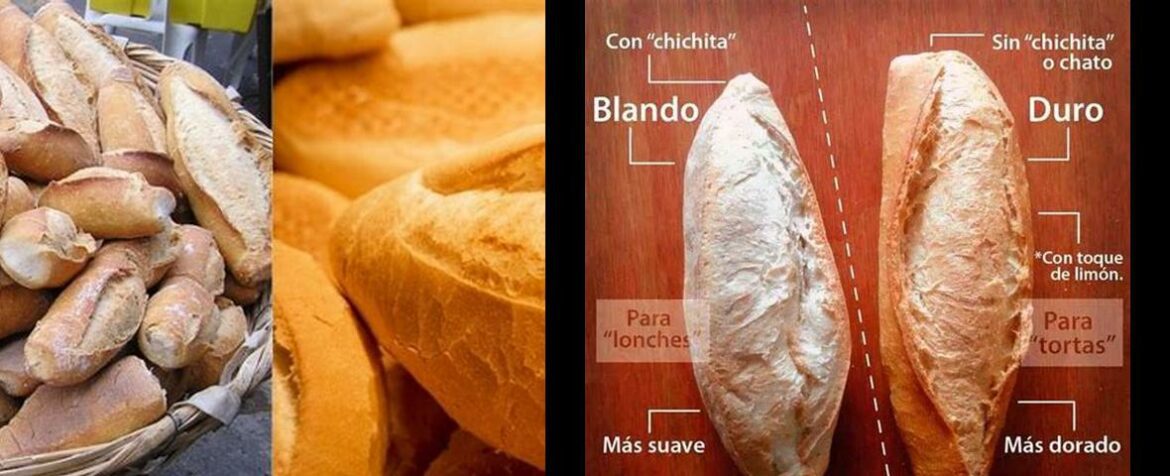Birote vs bolillo: Birote Vs Bolillo: A Culinary Exploration of Mexican Breads
Are you ready to embark on a mouthwatering journey through the diverse world of Mexican breads? Get ready to sink your teeth into the delicious debate of Birote Vs Bolillo! These two iconic breads have been vying for the top spot in Mexican cuisine, and we’re here to uncover the secrets behind their irresistible allure. From their origins and distinct characteristics to their best pairings with savory fillings, this blog post will leave you craving for more. So, grab a seat and prepare to indulge in the ultimate showdown of Birote Vs Bolillo – it’s time to settle this bread battle once and for all!
Birote Vs Bolillo: A Culinary Exploration of Mexican Breads
In the realm of Mexican cuisine, two types of bread stand out for their distinct flavors and textures: birote and bolillo. These beloved staples, each with its own unique origins, preparation methods, and culinary applications, have become integral to the Mexican dining experience. In this comprehensive guide, we’ll delve into the captivating world of birote and bolillo, exploring their differences, similarities, and the culinary delights they offer.
The Origins and Cultural Significance of Birote and Bolillo
Birote, a bread with French roots, traces its origins to the vibrant city of Guadalajara, Jalisco. Its popularity soared in the 19th century, becoming an integral part of the local cuisine, particularly in the iconic dish tortas ahogadas, a savory sandwich drenched in a spicy tomato sauce.
Bolillo, on the other hand, emerged from Spanish influences, brought to Mexico by immigrants in the 19th century. It quickly gained popularity throughout the country, becoming a staple in street food stalls and bakeries. Its versatility extends beyond sandwiches, as it also serves as an accompaniment to various dishes.
Unveiling the Secrets of Birote’s Recipe and Texture
Birote’s dense and crusty texture, coupled with its unique flavor, stems from its composition of wheat flour, water, yeast, and salt. Variations of the recipe may incorporate lard or sugar, lending additional layers of taste and texture. The extended fermentation process further contributes to the birote’s distinctive characteristics.
Exploring Bolillo’s Culinary Delights
Bolillo, known for its football-shaped appearance and sweet taste, boasts a fluffy interior and a crunchy crust. Its lighter texture, achieved by incorporating eggs or milk into the dough, makes it ideal for sandwiches like tortas. Its ability to hold up well to various fillings without becoming soggy adds to its versatility.
A Comparative Analysis: Birote Vs Bolillo
Origin and Cultural Significance:
– Birote: French roots, popular in tortas ahogadas.
– Bolillo: Spanish influences, used in sandwiches and as a side dish.
Ingredients and Recipe Variations:
– Birote: Dense texture from wheat flour, water, yeast, salt, with possible variations including lard or sugar.
– Bolillo: Lighter texture with eggs or milk added for a softer crumb and sweeter taste.
Texture and Crust Differences:
– Birote: Crunchy outer shell and chewy inside.
– Bolillo: Lighter and fluffier feel with a thinner, crispy crust.
Flavor Profile and Taste:
– Birote: Crispy outside and airy inside with sweet and tangy notes.
– Bolillo: Softer texture and milder flavor, with a light crispness that complements various fillings.
Birote and Bolillo: Culinary Treasures in Mexican Cuisine
Birote and bolillo, while distinct in their characteristics, share a common role as foundational elements in Mexican cuisine. They serve as canvases for an array of fillings and toppings, transforming into delectable tortas, sandwiches, and meals. Their versatility and ability to enhance the flavors of Mexican dishes make them indispensable culinary treasures.
Choosing Between Birote and Bolillo: A Matter of Taste and Occasion
The choice between birote and bolillo ultimately rests upon personal preference and the demands of a specific recipe. For those seeking a crusty exterior and chewy interior, birote emerges as the ideal choice. Conversely, if a softer texture and milder flavor are desired, bolillo steals the spotlight.
Expanding Culinary Horizons with Birote and Bolillo
Birote and bolillo offer boundless opportunities for culinary exploration. Experimenting with different fillings and toppings unlocks a world of delectable possibilities, creating delightful experiences that tantalize the taste buds. From classic tortas to innovative sandwich creations, the versatility of these breads knows no bounds.
In the tapestry of Mexican gastronomy, birote and bolillo stand as two pillars of flavor and texture. Their distinct characteristics and culinary versatility have earned them a cherished place in the hearts of Mexicans and food enthusiasts alike. Whether enjoyed in traditional dishes or reimagined in contemporary creations, these breads continue to captivate and delight, adding a unique touch to every culinary adventure.
FAQ about Birote Vs Bolillo
Q: What is the difference between birote and bolillo?
A: Birote is known for its crusty exterior and chewy interior, while bolillo has a softer texture and milder flavor.
Q: Which bread is better for a crusty sandwich?
A: If you prefer a crusty sandwich, birote would be the ideal choice.
Q: Which bread is better for a softer texture?
A: If you prefer a softer texture, bolillo would be the better option.
Q: Where did birote originate from?
A: Birote originated from Guadalajara, Jalisco and has French roots.
Q: What is a popular dish that uses birote?
A: Birote is commonly used in the iconic dish tortas ahogadas, a savory sandwich drenched in a spicy tomato sauce.
Q: How versatile are birote and bolillo in culinary creations?
A: Birote and bolillo offer endless possibilities for culinary exploration, allowing for experimentation with different fillings and toppings in dishes like tortas and sandwiches.


